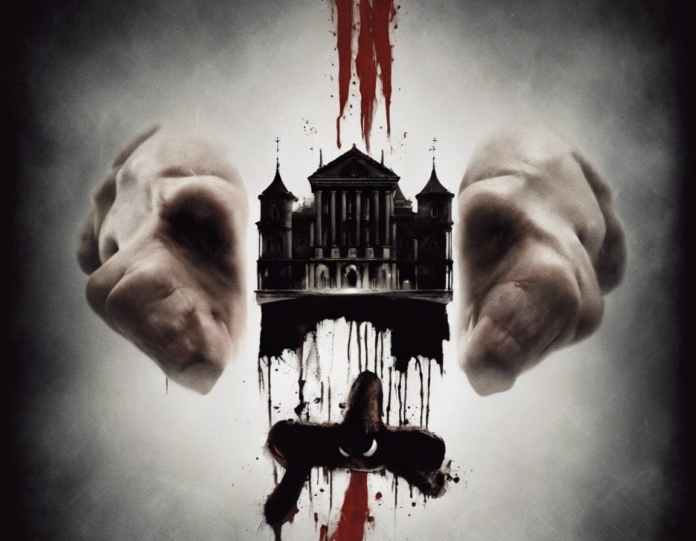Introduction
In the realm of controversial cinema, few films have elicited as much shock, disgust, and debate as “A Serbian Film”. Directed by Serbian filmmaker Srđan Spasojević, this 2010 horror-drama has become notorious for its extreme violence, graphic sexual content, and disturbing portrayal of taboo subjects. Despite facing widespread condemnation and censorship, the film has garnered a cult following and sparked intense discussions about the boundaries of artistic expression, censorship, and the ethics of depicting extreme content on screen.
The Plot
“A Serbian Film” follows the story of Milos, a retired porn star struggling to make ends meet for his family. He is lured back into the industry by an enigmatic director offering him a lucrative job, only to find himself embroiled in a nightmarish world of sadism, depravity, and unspeakable acts. As Milos descends deeper into this perverse underworld, he becomes a pawn in a twisted game of manipulation and control, culminating in a gruesome climax that pushes the boundaries of viewers’ tolerance.
Themes and Motifs
One of the central themes of “A Serbian Film” is the exploration of the dark side of human nature and the corruption of innocence. The film delves into the depths of depravity and explores how individuals can be manipulated and exploited in the pursuit of power and gratification. It also challenges conventional morality and confronts the audience with uncomfortable truths about the nature of violence, sexuality, and power dynamics.
Controversy and Censorship
Unsurprisingly, “A Serbian Film” has faced intense scrutiny and censorship in many countries due to its extreme content. Critics have accused the film of glorifying violence, promoting misogyny, and crossing the line between artistic expression and gratuitous exploitation. Several countries have banned or heavily edited the film, deeming it too dangerous and offensive for public consumption. Despite this backlash, the director has defended the film as a critique of the Serbian society and a reflection of its darkest aspects.
Critical Reception
Critics have been sharply divided over “A Serbian Film”. Some have praised its audacity, craftsmanship, and willingness to push boundaries, hailing it as a bold and provocative work of art. Others have condemned it as exploitative, gratuitous, and morally repugnant, arguing that its shock value overshadows any deeper meaning or artistic merit. The film’s reception has been further complicated by its controversial subject matter, with some viewers unable to look past its graphic content to engage with its themes and narrative.
Legacy and Influence
Despite its divisive reception, “A Serbian Film” has left a lasting impact on the horror genre and independent cinema. It has inspired a new wave of extreme cinema that pushes the boundaries of taste and acceptability, challenging audiences to confront their preconceptions and moral boundaries. The film’s cult following has grown over the years, with fans celebrating its audacity and subversive power. It has also sparked debates about censorship, artistic freedom, and the responsibility of filmmakers to their audiences.
A Serbian Film and the Limits of Artistic Expression
The controversy surrounding “A Serbian Film” raises important questions about the limits of artistic expression and the responsibilities of filmmakers when depicting extreme content. While artists have the right to explore difficult and uncomfortable subjects, they also have a duty to consider the impact of their work on audiences and society as a whole. Balancing creative freedom with ethical considerations is a delicate and complex task, requiring careful thought and sensitivity to the potential consequences of pushing boundaries too far.
Conclusion
In conclusion, “A Serbian Film” remains a deeply divisive and controversial work that continues to spark debate and discussion among viewers, critics, and scholars. Its uncompromising depiction of violence, sexuality, and depravity has earned it a place in the annals of extreme cinema, challenging audiences to confront their own boundaries and beliefs. Whether viewed as a daring work of art or a reprehensible exercise in exploitation, the film’s legacy is undeniable, leaving a lasting impression on those brave enough to witness its unsettling vision of a world gone mad.
FAQs (Frequently Asked Questions)
1. Is “A Serbian Film” based on a true story?
No, “A Serbian Film” is a work of fiction created by director Srđan Spasojević and screenwriter Aleksandar Radivojević. While the film touches on real-world issues and societal themes, its storyline and characters are entirely fictional.
2. Why was “A Serbian Film” banned in several countries?
The extreme violence, graphic sexual content, and disturbing themes depicted in “A Serbian Film” led to its banning or severe censorship in many countries. Authorities deemed the film too controversial and potentially harmful for public viewing.
3. What is the director’s intention behind making “A Serbian Film”?
Director Srđan Spasojević has stated that the film is a critique of the Serbian society and a reflection of its darkest aspects, including corruption, manipulation, and exploitation. He aimed to shock and provoke audiences to confront uncomfortable truths about human nature.
4. How did the cast and crew react to the controversial content of the film?
Many members of the cast and crew of “A Serbian Film” have expressed mixed feelings about the extreme content of the movie. While some defended it as a bold artistic statement, others found certain scenes distressing and challenging to film.
5. Is there a censored version of “A Serbian Film” available for viewing?
In some countries where the film was banned, censored versions with edited scenes were released to comply with local regulations. However, these versions may not fully capture the director’s original vision and message.
6. What has been the long-term impact of “A Serbian Film” on the horror genre?
“A Serbian Film” has had a lasting impact on the horror genre, inspiring a new wave of extreme cinema that pushes the boundaries of acceptability and explores taboo subjects. It has influenced filmmakers to take risks and challenge audiences with provocative and controversial content.
7. Does “A Serbian Film” have any redeeming qualities or artistic merit?
While opinions on this vary, some critics and viewers have praised the film for its audacity, technical craftsmanship, and willingness to confront difficult themes. They argue that it offers a unique perspective on human nature and societal decadence.
8. How has the debate over censorship and artistic freedom been influenced by “A Serbian Film”?
The controversy surrounding “A Serbian Film” has reignited debates over censorship, artistic freedom, and the ethics of depicting extreme content in cinema. It has raised important questions about the responsibilities of filmmakers and the need to balance creative expression with social impact.
9. Can “A Serbian Film” be considered a form of social commentary?
Many critics and scholars interpret “A Serbian Film” as a form of social commentary that critiques societal norms, power dynamics, and the dark underbelly of human behavior. The film’s disturbing imagery and controversial themes are seen as a reflection of broader cultural issues.
10. Is “A Serbian Film” intended for mainstream audiences or a niche market?
Due to its extreme content and controversial nature, “A Serbian Film” is not intended for mainstream audiences and is targeted more towards niche markets interested in boundary-pushing cinema. It requires a certain level of maturity and open-mindedness to appreciate its artistic intentions.









